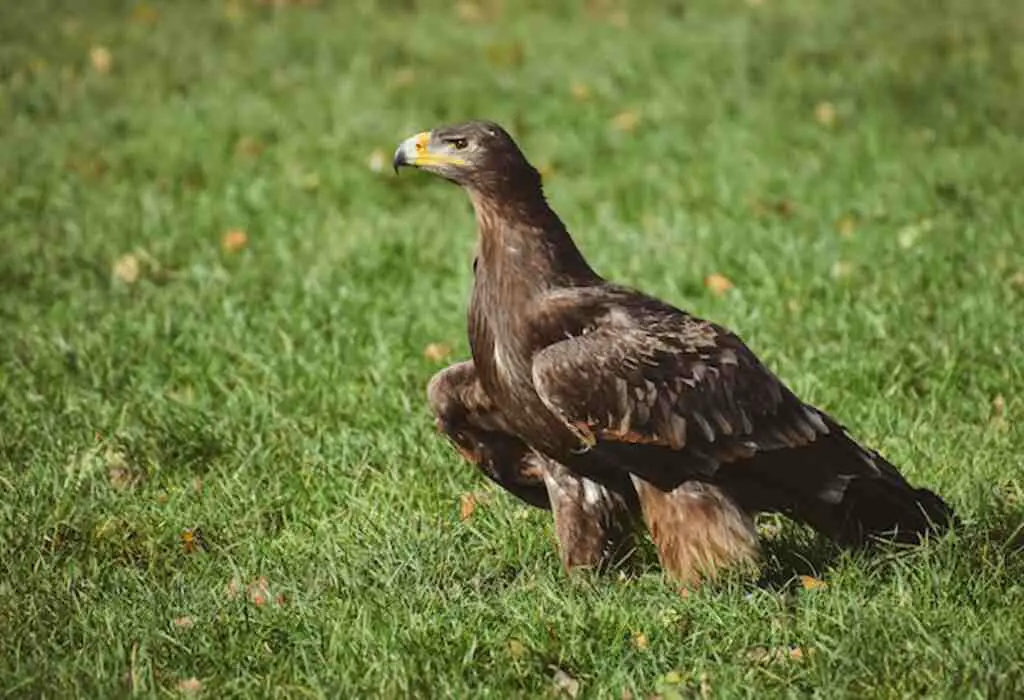In the vast expanse of the sky, where wings soar and feathers glide, a captivating dance of predator and prey unfolds. Amidst this aerial symphony, one question arises: do eagles eat seagulls?
This article aims to explore the intricate web of interactions between these majestic creatures, shedding light on their diets, habitats, behaviors, and the factors that influence their encounters.
As we embark on this scientific journey, let us imagine ourselves as spectators in the grand theater of nature, observing the delicate balance between survival and sustenance.
By delving into the depths of this topic, we hope to unravel the myths and misconceptions surrounding eagle-seagull interactions, and to provide a comprehensive understanding of the dynamics that shape their coexistence.
Join us as we unravel the secrets of the skies and unlock the mysteries of these awe-inspiring avian encounters.
Table of Contents
- 1 Key Takeaways
- 2 The Diet of Eagles
- 3 The Diet of Seagulls
- 4 The Habitat and Behavior of Eagles
- 5 The Habitat and Behavior of Seagulls
- 6 Do Eagles Eat Seagulls
- 7 Interactions Between Eagles and Seagulls
- 8 Factors Influencing Eagle-Seagull Interactions
- 9 Other Predators of Seagulls
- 10 Conservation Efforts
- 11 Myths and Misconceptions
- 12 Frequently Asked Questions
- 12.1 Are seagulls a common food source for eagles?
- 12.2 Can eagles and seagulls coexist peacefully in the same habitat?
- 12.3 How do eagles and seagulls interact with each other in the wild?
- 12.4 What are some other factors that can influence the interactions between eagles and seagulls?
- 12.5 What are some common myths or misconceptions about eagles and seagulls?
- 13 Conclusion
- 14 Author
Key Takeaways
- Eagles have a diverse diet that includes seagulls, and they monitor seagull populations to adjust their hunting strategies.
- Seagulls are opportunistic feeders and exhibit evasive maneuvers to avoid eagles.
- Interactions between eagles and seagulls are influenced by the availability of prey and habitat overlap, and they impact the population dynamics of both species.
- Other predators, such as hawks, owls, gulls, and marine mammals, also hunt seagulls.
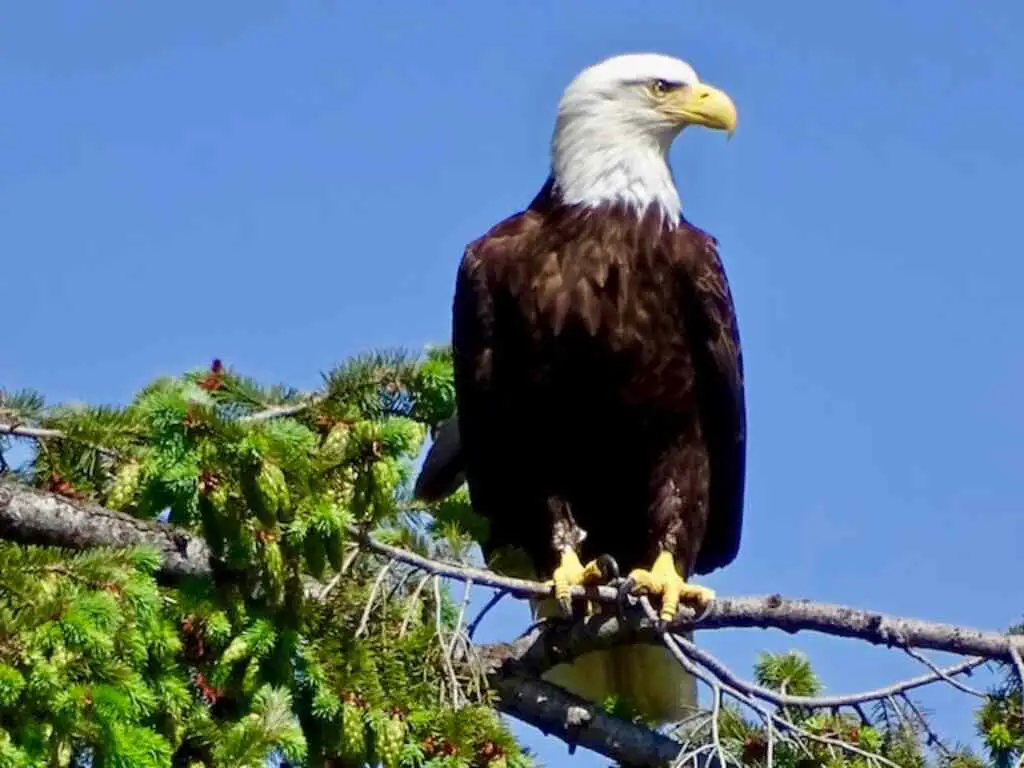
The Diet of Eagles
The diet of eagles encompasses a wide variety of prey, including but not limited to seagulls. Eagles are opportunistic predators that adapt their feeding habits based on their environment and prey availability.
They have a diverse diet that consists of fish, small mammals, reptiles, and birds.
During eagle migration, their diet may shift, as they rely on different food sources along their journey.
Additionally, eagle breeding patterns can also influence their diet, as they require a sufficient amount of food to nourish their offspring.
Eagles are known for their impressive hunting skills and their ability to catch prey in mid-air. Their sharp talons and strong beaks allow them to capture and consume a wide range of prey.
Transitioning into the subsequent section about the diet of seagulls, it is important to note that eagles are known to prey on seagulls as part of their diverse feeding habits.
The Diet of Seagulls
Seagulls’ dietary patterns encompass a wide range of marine invertebrates and small vertebrates. They are opportunistic feeders, scavenging for food in coastal areas and on the open sea.
Seagull feeding habits vary depending on the availability of prey. They primarily consume fish, crustaceans, mollusks, and insects.
Additionally, they feed on small mammals, eggs, and even carrion. Seagulls are known to exploit human activities, such as feeding on discarded food in urban areas or scavenging from fishing boats.
However, the diet of seagulls can be affected by pollution in their environment.
Studies have shown that seagulls living in areas with high levels of pollution tend to have a less diverse diet and may rely more heavily on anthropogenic food sources.
This impact of pollution on seagull diet highlights the vulnerability of these birds to human-induced environmental changes.
Moving on to the habitat and behavior of eagles, they occupy diverse ecosystems and exhibit fascinating hunting strategies.
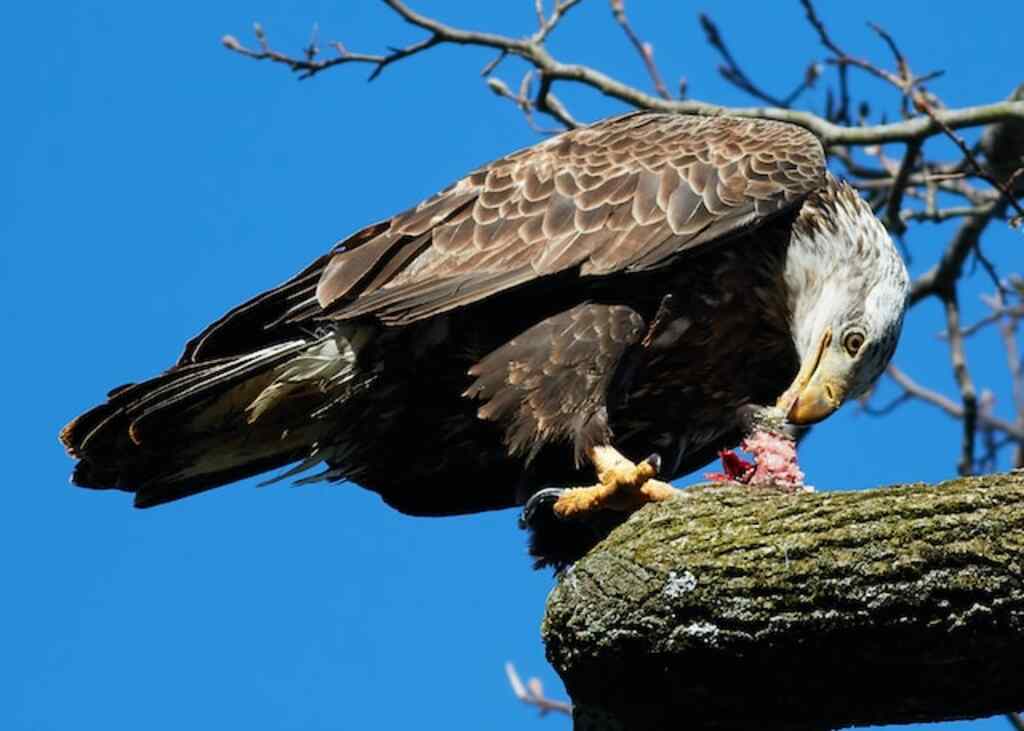
The Habitat and Behavior of Eagles
Eagles are known for their wide distribution across various habitats, including mountains, forests, and coastal areas. They can be found on every continent except Antarctica.
These birds of prey are skilled hunters, using a variety of techniques and strategies to catch their prey. They employ aerial hunting, swooping down from great heights to snatch their prey from the ground or water.
Eagles also use perching and stalking techniques, patiently waiting for their prey to come within striking distance before launching an attack.
Where eagles live and hunt
Living in diverse habitats around the world, eagles establish their territories and actively search for prey in their quest for survival.
This allows them to take advantage of seasonal changes in prey availability and maximize their chances of survival.
Additionally, eagles are known to closely monitor the population dynamics of seagulls, which are a common prey species for them.
By understanding the fluctuations in seagull populations, eagles can adjust their hunting strategies accordingly.
Eagles typically live in areas that provide them with a clear view of their surroundings, such as high cliffs or tall trees.
From these vantage points, they can spot potential prey and launch their attacks with incredible precision and speed.
Transitioning into the subsequent section about hunting techniques and strategies of eagles, their keen eyesight and aerial prowess make them formidable predators in the animal kingdom.
Hunting techniques and strategies of eagles
One remarkable hunting technique employed by eagles involves utilizing their keen eyesight and aerial prowess to spot and target small mammals scurrying through tall grasslands, swiftly descending upon their unsuspecting prey with deadly accuracy.
Eagles are known for their exceptional vision, which allows them to detect even the slightest movement from great distances.
Once a potential target is identified, eagles use their powerful wings and sharp talons to launch themselves into the air and glide effortlessly towards their prey.
They can reach speeds of up to 80 miles per hour during their descent, ensuring a swift and efficient capture.
In addition to their speed and agility, eagles also rely on their strong beaks and talons to immobilize and kill their prey.
This hunting technique is not limited to small mammals, as eagles have also been observed hunting and capturing seagulls in mid-flight.
This behavior demonstrates the versatility and adaptability of eagles as formidable predators.
Transitioning into the subsequent section about the habitat and behavior of seagulls, we can explore how eagles target these coastal birds in their hunting strategies.
The Habitat and Behavior of Seagulls
Seagulls, commonly found near coastal areas and bodies of water, exhibit various behaviors and adapt to different habitats.
They are known for their ability to migrate over long distances, with some species traveling thousands of miles each year.
Seagull migration is often influenced by factors such as food availability and weather conditions.
During mating season, seagulls engage in elaborate rituals to attract a mate. These rituals may include displays of flight, calls, and courtship behaviors.
Seagulls are highly adaptable and can thrive in a variety of habitats, including beaches, cliffs, and urban areas.
They are opportunistic feeders, scavenging for food along the coast and also preying on small marine organisms.
Understanding the habitat and behavior of seagulls is essential to comprehending the interactions between eagles and seagulls, as eagles often prey on seagulls in their natural habitat.

Do Eagles Eat Seagulls
Yes, eagles occasionally eat seagulls. While eagles have a diverse diet, consisting mainly of fish and small mammals, they are opportunistic predators and may prey on birds, including seagulls, if the opportunity arises. Seagulls are not a primary food source for eagles, but they may be targeted in certain circumstances.
Interactions Between Eagles and Seagulls
The dramatic dance between these coastal predators and their aerial counterparts captivates the audience as they engage in a timeless battle for survival.
Eagles and seagulls compete for resources in their shared habitats, leading to interesting interactions between the two species.
Seagulls, known for their scavenging behavior, often gather in large groups near food sources such as fishing boats, beaches, and landfills.
This behavior attracts the attention of eagles, who are skilled hunters and opportunistic feeders.
Eagles employ various hunting strategies, including aerial pursuits and surprise attacks, to catch seagulls in mid-air or on the ground.
Seagulls, on the other hand, exhibit evasive maneuvers, such as quick flight and flocking together, to avoid being captured by eagles.
These competitions and behavior patterns shape the dynamic relationship between eagles and seagulls.
Factors influencing these interactions will be explored in the subsequent section about ‘factors influencing eagle-seagull interactions’.
Factors Influencing Eagle-Seagull Interactions
Factors influencing eagle-seagull interactions are numerous and complex, with several key factors determining the nature of their relationship.
One important factor is the availability of prey, as both eagles and seagulls compete for similar food sources such as fish and small marine organisms.
Another factor is habitat overlap, as eagles and seagulls often share the same coastal areas and nesting grounds.
Additionally, the behavior and hunting strategies of eagles can influence their interactions with seagulls.
For example, certain species of eagles are known to actively prey on seagulls, while others may only target them opportunistically.
The impact of these interactions on the marine ecosystem is significant, as they can affect the population dynamics of both eagles and seagulls, as well as the distribution and abundance of their prey.
Understanding these factors is crucial for assessing the overall health and functioning of coastal ecosystems.
In the next section, we will explore the role of other predators in seagull populations.
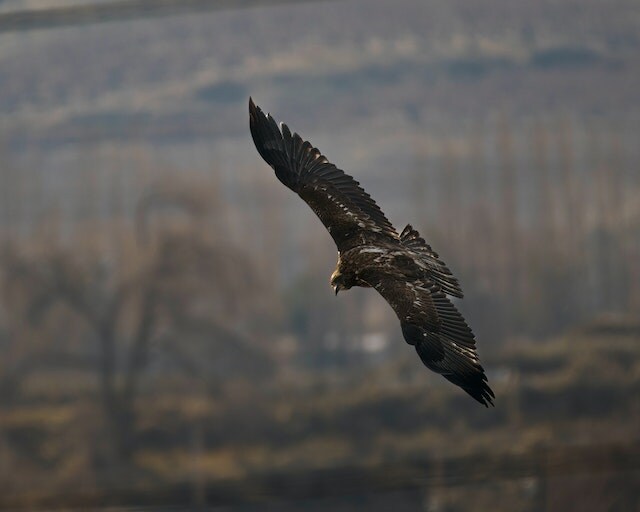
Other Predators of Seagulls
Other predators that pose a threat to seagulls include various avian species and marine mammals.
Avian predators, such as hawks, owls, and gulls, are known to target seagulls as a food source.
These avian predators have adapted hunting strategies that allow them to effectively capture and consume seagulls.
For instance, hawks are known for their impressive speed and agility in flight, which enables them to chase and catch seagulls mid-air.
Marine mammals, such as seals and sea lions, also prey on seagulls when the opportunity arises. These predators often target seagulls near coastal areas, where the birds gather in large numbers.
It is important to understand the dynamics of seagull populations and the role of these predators in order to develop effective conservation efforts for these birds.
Conservation Efforts
Avian predators and marine mammals have prompted the development of diverse conservation efforts aimed at safeguarding seagulls against their natural adversaries.
These conservation efforts focus on minimizing the environmental impact of human activities on seagull populations and their habitats.
One such effort involves the establishment of protected areas where seagulls can breed and forage undisturbed.
These areas are carefully managed to ensure the availability of suitable nesting sites, adequate food sources, and a safe environment free from disturbance and pollution.
Additionally, conservationists work to raise awareness about the importance of seagulls in marine ecosystems and the need to protect their populations.
By understanding the ecological role of seagulls and implementing effective conservation strategies, we can help preserve these iconic birds.
Transitioning into the subsequent section about myths and misconceptions, it is important to address some common misunderstandings about seagulls.
Myths and Misconceptions
Misunderstandings about seagulls persist in popular culture, but by dispelling these misconceptions, we can gain a better understanding of these remarkable birds and their ecological significance.
- Common myths about eagles and seagulls:
- Eagles are known to prey on seagulls extensively.
- Seagulls are a nuisance and serve no purpose in the ecosystem.
- Seagulls are aggressive and pose a threat to humans.
Contrary to these beliefs, the role of seagulls in the ecosystem is crucial. They are opportunistic feeders, consuming a variety of food sources, including fish, insects, and carrion.
Their scavenging behavior plays a vital role in maintaining the cleanliness of coastal areas by feeding on dead organisms and waste.
Seagulls also contribute to nutrient cycling, dispersing seeds through their droppings. These birds are not inherently aggressive towards humans but may exhibit defensive behavior if they feel threatened.
By understanding the true nature and significance of seagulls, we can appreciate their ecological contributions and coexist harmoniously with them.
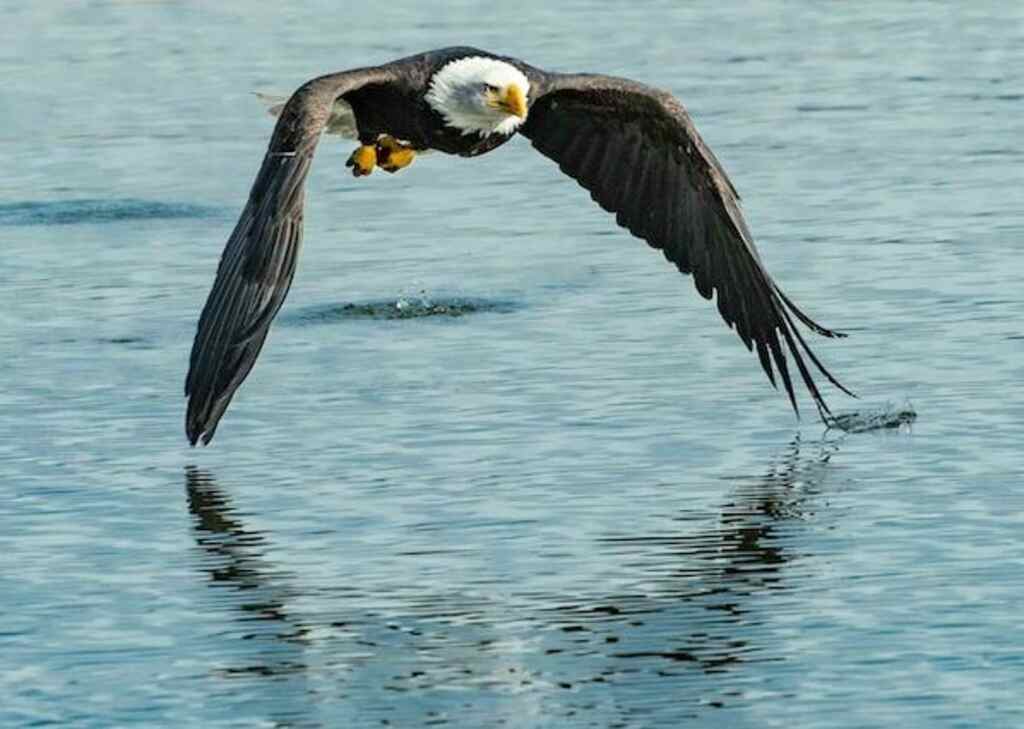
Frequently Asked Questions
Are seagulls a common food source for eagles?
Seagulls are opportunistic scavengers, feeding on a wide range of prey including fish, insects, and carrion. Eagles, as apex predators, have been observed to occasionally prey on seagulls, but it is not a common food source for them.
Can eagles and seagulls coexist peacefully in the same habitat?
Eagles and seagulls can coexist peacefully in the same habitat. However, their behavior may be influenced by human activities, such as habitat destruction and food availability. Understanding these interactions is crucial for ensuring their freedom and conservation.
How do eagles and seagulls interact with each other in the wild?
Eagles and seagulls interact in the wild through predatory behaviors and competition for resources. Eagles hunt and capture seagulls through their aerial hunting skills. They may compete for the same food sources, such as fish, in their shared habitat.
What are some other factors that can influence the interactions between eagles and seagulls?
Competition for resources and the impact of human activity are important factors that can influence the interactions between eagles and seagulls. These factors can affect their foraging behavior, breeding success, and overall population dynamics.
What are some common myths or misconceptions about eagles and seagulls?
Common misconceptions about eagles and seagulls include the belief that they compete for the same food sources. However, eagles primarily prey on fish and small mammals, while seagulls rely on scavenging and opportunistic feeding.
Conclusion
In conclusion, the diet of eagles and seagulls consists of various factors such as availability of prey and habitat characteristics.
While eagles are known to have a diverse diet, including seagulls, seagulls primarily feed on fish and other marine organisms.
The interactions between eagles and seagulls are influenced by factors like competition for resources and territorial behavior.
It is worth noting that eagles are not the only predators of seagulls, as other species also prey on them. Conservation efforts are crucial to maintain the balance between these species and their habitats.

